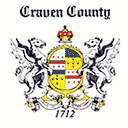Hairy Bittercress Locked and Loaded
go.ncsu.edu/readext?582926
en Español / em Português
El inglés es el idioma de control de esta página. En la medida en que haya algún conflicto entre la traducción al inglés y la traducción, el inglés prevalece.
Al hacer clic en el enlace de traducción se activa un servicio de traducción gratuito para convertir la página al español. Al igual que con cualquier traducción por Internet, la conversión no es sensible al contexto y puede que no traduzca el texto en su significado original. NC State Extension no garantiza la exactitud del texto traducido. Por favor, tenga en cuenta que algunas aplicaciones y/o servicios pueden no funcionar como se espera cuando se traducen.
Português
Inglês é o idioma de controle desta página. Na medida que haja algum conflito entre o texto original em Inglês e a tradução, o Inglês prevalece.
Ao clicar no link de tradução, um serviço gratuito de tradução será ativado para converter a página para o Português. Como em qualquer tradução pela internet, a conversão não é sensivel ao contexto e pode não ocorrer a tradução para o significado orginal. O serviço de Extensão da Carolina do Norte (NC State Extension) não garante a exatidão do texto traduzido. Por favor, observe que algumas funções ou serviços podem não funcionar como esperado após a tradução.
English
English is the controlling language of this page. To the extent there is any conflict between the English text and the translation, English controls.
Clicking on the translation link activates a free translation service to convert the page to Spanish. As with any Internet translation, the conversion is not context-sensitive and may not translate the text to its original meaning. NC State Extension does not guarantee the accuracy of the translated text. Please note that some applications and/or services may not function as expected when translated.
Collapse ▲As of mid-February in Craven County, I’m noticing that the hairy bittercress plants (Cardamine hirsuta) on the grounds of the Agricultural Building are flowering and beginning to develop their unique, slender seed pods. When mature, these touch-sensitive seedpods project or launch seeds away from the plants, leading to dense mats of multiple plants in turf or landscape beds.
Hand-pulling is an effective way to reduce the population in your landscape, but it’s important to get started prior to seed production. Otherwise, you’re helping to spread the seeds every time you pull up a plant. Another option is to harvest and eat the plants. No guarantees on the taste – but hairy bittercress is a member of the mustard family, and is edible.
Visit the Cardamine hirsuta page for more information.






